10 Best Walkable National Parks, According to Travel Experts

Visiting a U.S. national park is an adventure no matter how you choose to explore. There are those who prefer to take in the sights while driving through, while others like to immerse themselves in nature and set out on foot. If the latter appeals to you, there are a few national parks you might want to add to your travel bucket list, which are ideal choices for walking—and also great if you’re up for a more challenging hike. Read on for the 10 best national parks you can walk through.
RELATED: The 10 Best U.S. National Parks for Hiking.
1
Arches National Park (Utah)

You’ll definitely get your steps in at Arches National Park, according to Dan Gold, travel expert at Half Half Travel.
“I traveled to this national park on my own and took time to walk through what I thought were interesting hikes where I could take memorable photos,” Gold explains. “There are a bunch of short, not-too-difficult walking paths and routes within Arches, and through them all, you’ll get to see famous rock formations, landscapes, and viewpoints that make this national park special.”
2
White Sands National Park (New Mexico)

Another park best seen on foot is White Sands National Park in New Mexico. According to Adam Marland, travel photographer and blogger for We Dream of Travel, if you only drive through, you’re doing yourself a disservice.
“One short road is all you get by vehicle for exploring the ethereal landscape of White Sands National Park; the rest is up to you to explore by foot!” he says, noting that you may even want to forgo your sneakers.
“Leave your shoes in the car and enjoy any number of trails through the pillowy-soft hills of gypsum that roll ever-onward for miles in each direction,” he suggests.
Marland adds that the impressive views change between sunrise and sunset.
“In fact, the ‘white sand’ for which the park is named is not white, nor sand! It is actually a translucent gypsum that takes on the ambient color of the light,” he explains. “For most of the day, it appears as white as snow under the bright overhead sunlight. The colors will later transform to match the yellow, orange, and red of the setting sun.”
3
Zion National Park (Utah)
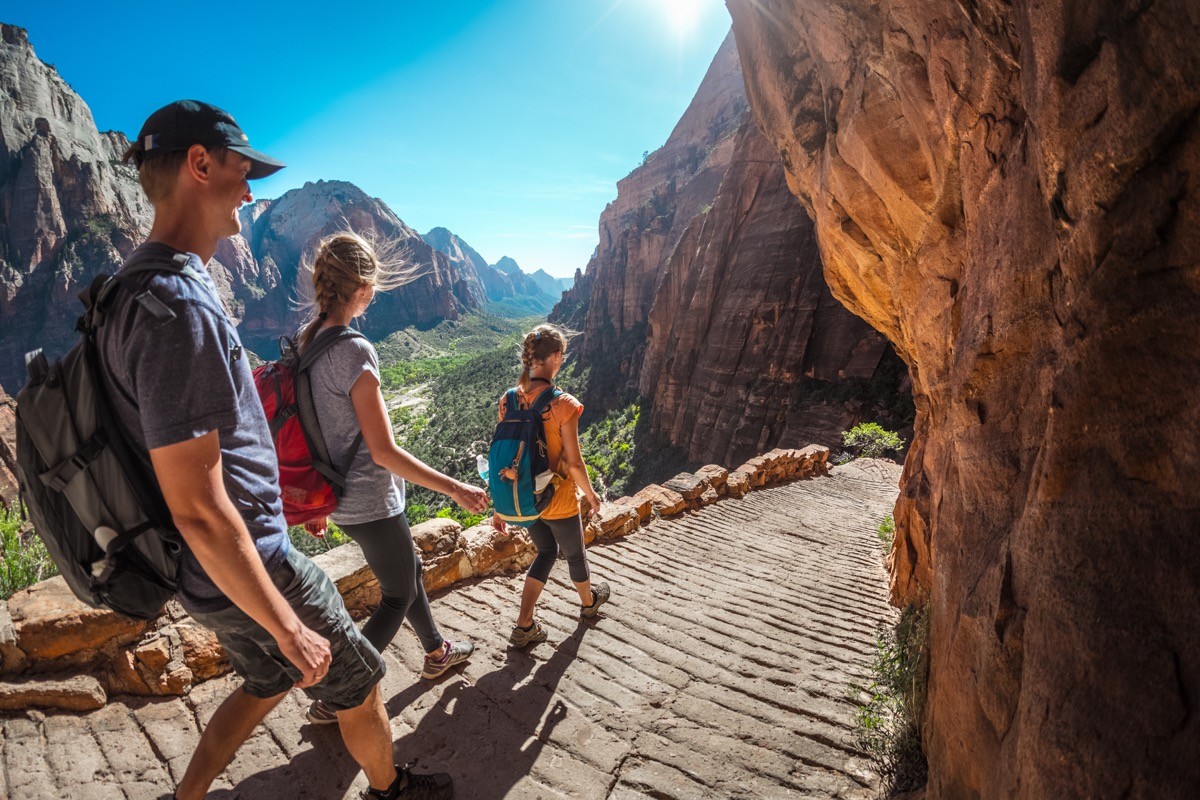
If you’ve always wanted to explore Zion National Park, Adrian Todd, an outdoor expert, hiking coach, and founder of the hiking website Great Minds Think Hike, recommends doing so on foot.
“There are a lot of awesome national parks in Utah that are amazing for exploring by foot such as Arches and Bryce, but I highly recommend checking out Zion National Park,” Todd says. “Zion offers similar desert-type views, but is a bit different as it boasts towering red canyons, the flowing emerald-colored Virgin River, and is more lush with more wildlife.”
Todd cites some of the most popular (and unique) trails, including the Narrows and Angels Landing, but there’s much more to see than just the big-name spots.
“I highly recommend checking out many of the other trails in Zion as well, such as the Emerald Pools, and heading up Walter’s Wiggles to Scout Overlook,” he says. “If you want to check out the Narrows but do not want to hike in the water, I recommend just doing the Narrows Riverside Walk, which will allow you to see most of it to the point of where you would get into the river.”
As for Angels Landing, Todd says it’s worth the journey—as long as you’re prepared with a hiking permit and don’t have a fear of heights.
“Angels Landing is a unique hike where you scramble up chunks of red rock with portions of a chain link railing,” he explains. Upon reaching the top, you can get a 360-degree view of the park.
RELATED: 8 Breathtaking Reasons to Visit Zion National Park, Travel Experts Say.
4
Acadia National Park (Maine)
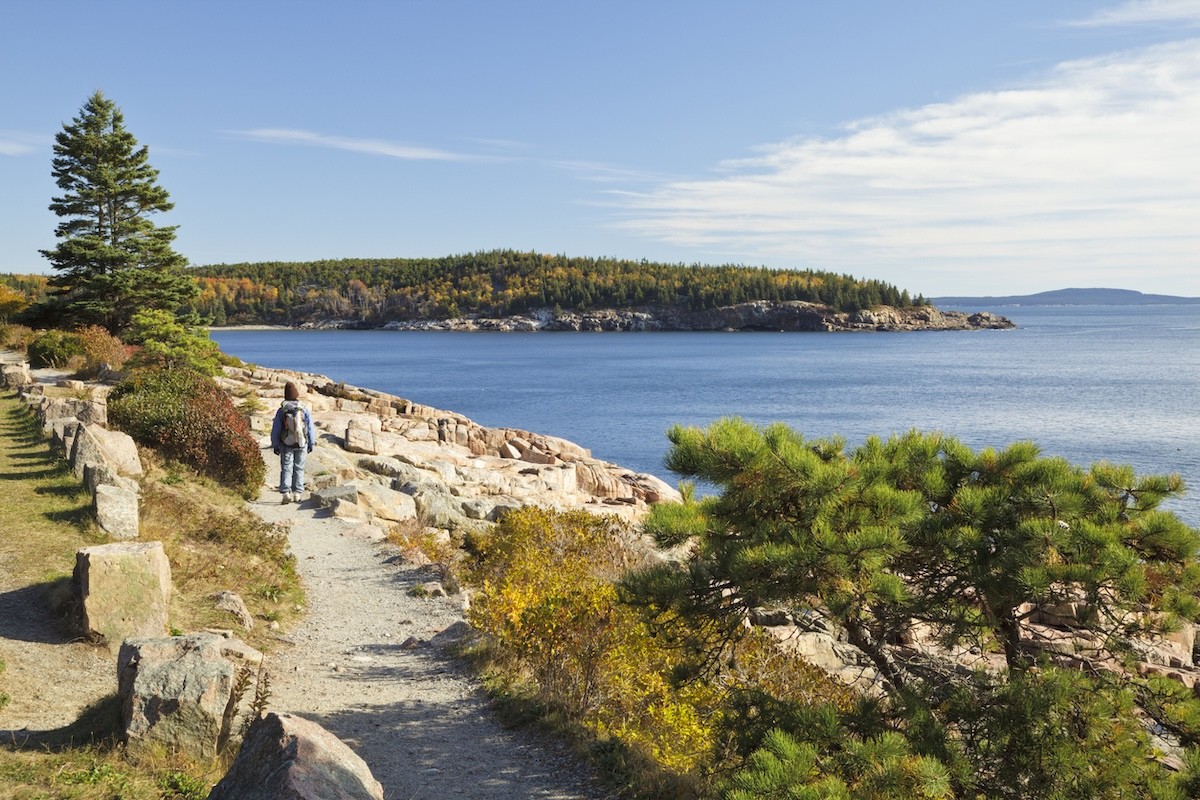
During the fall, Maine’s Acadia National Park is known for its spectacular foliage display—and according to Becca Siegel, travel blogger of Half Half Travel, the best way to admire the changing leaves and the rest of the park is by walking.
“For starters, it’s not all that big, so it’s less overwhelming than, say, Yellowstone or the Grand Canyon,” she explains. “Acadia has trails that fall into all three categories of easy, moderate, and hard, so there’s something for everyone who wants to see the beauty of this national park by foot.”
Even better, there are plenty of paths that have boardwalks or footpaths along the water. “These factors also make it a great choice for a national park to visit with kids and a family,” Siegel says.
5
Glacier National Park (Montana)
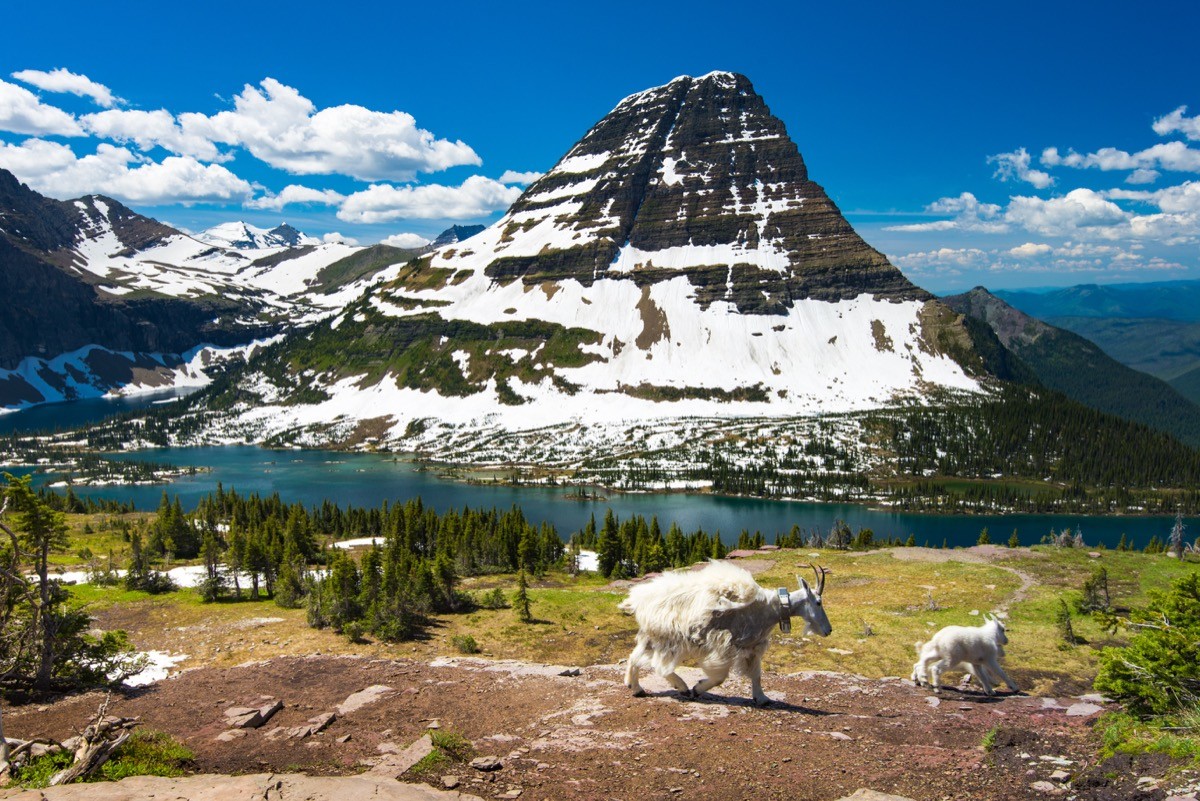
Glacier National Park is on many a bucket list, so it can get crowded, especially when driving. That’s exactly why Todd recommends taking advantage of the more than 700 miles of hiking trails by foot.
“The hikes at Glacier will take you to pristine glacial lakes hugged by mountains, along rushing rivers, and crashing waterfalls,” he shares, adding that the Highline Trail, Iceberg Lake, and Grinnell Glacier are also worth seeing.
Carrie Rose, founder of SunUp Coaching, notes that Avalanche Lake and the Hidden Lake Overlook are probably the most popular easy hikes. She also suggests Upper Two Medicine Lake or the Dawson-Pitamakan loop, both of which are moderate in difficulty.
“Still hungry for more hiking? Submit for a permit and spend a few nights in the Glacier backcountry,” Rose says. “You can submit for permits in the spring, or go for a walk-up permit the day before. Make sure you have the proper gear and food storage—Glacier is bear country! Glacier trails are well marked, and the backcountry sites have specific cooking areas, food storage (typically a bear hang), and tent sites.”
6
Shenandoah National Park (Virginia)
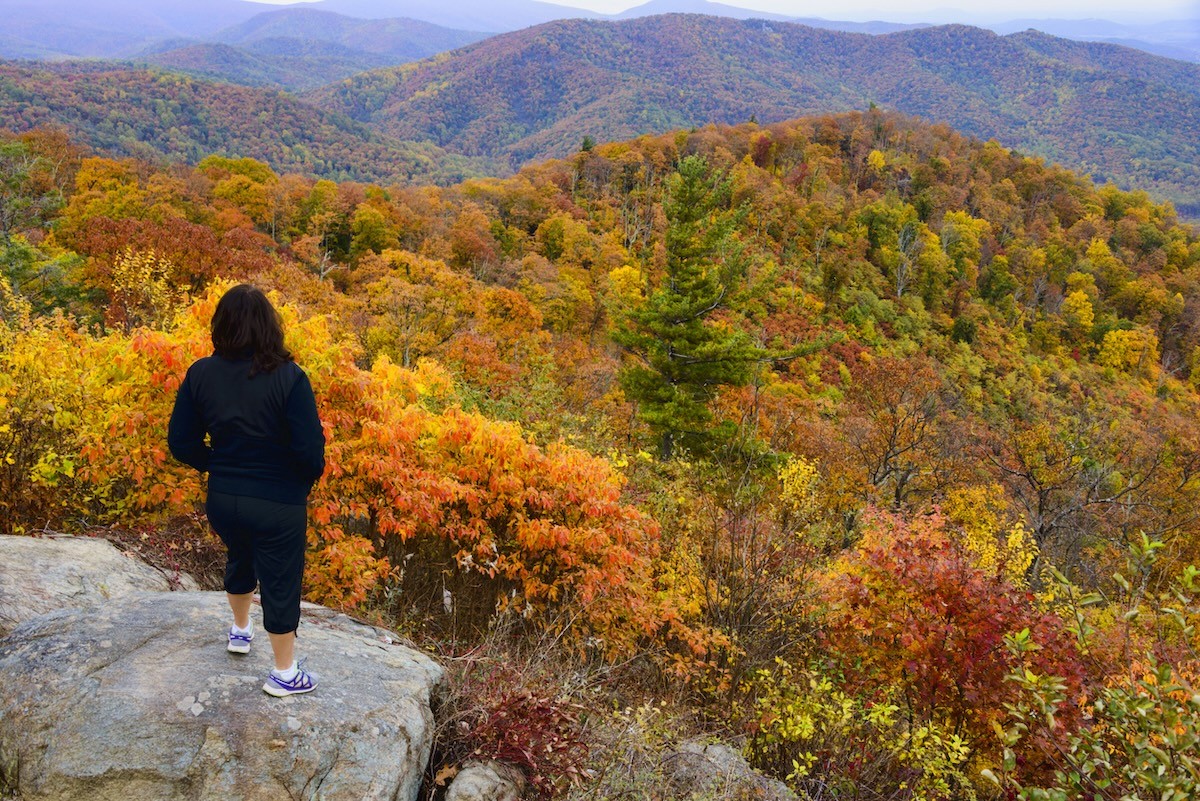
Visiting Virginia’s Shenandoah National Park on foot will not only help you connect with nature, but also with yourself, says Abbey Sangmeister, founder of Evolving Whole.
“Shenandoah National Park is a magical place, filled with trails from the beginner to the advanced. You will find waterfalls, various rock formations, wildlife (always respect them and give them space), and vistas that give you panoramic views,” she says. “I highly recommend stopping to talk to one of the park rangers. They will give you suggestions on hikes that match your level of experience and ones that are not as crowded.”
The sunsets at Shenandoah are certainly not to be missed, and they are best observed from a lookout point.
7
Rocky Mountain National Park (Colorado)
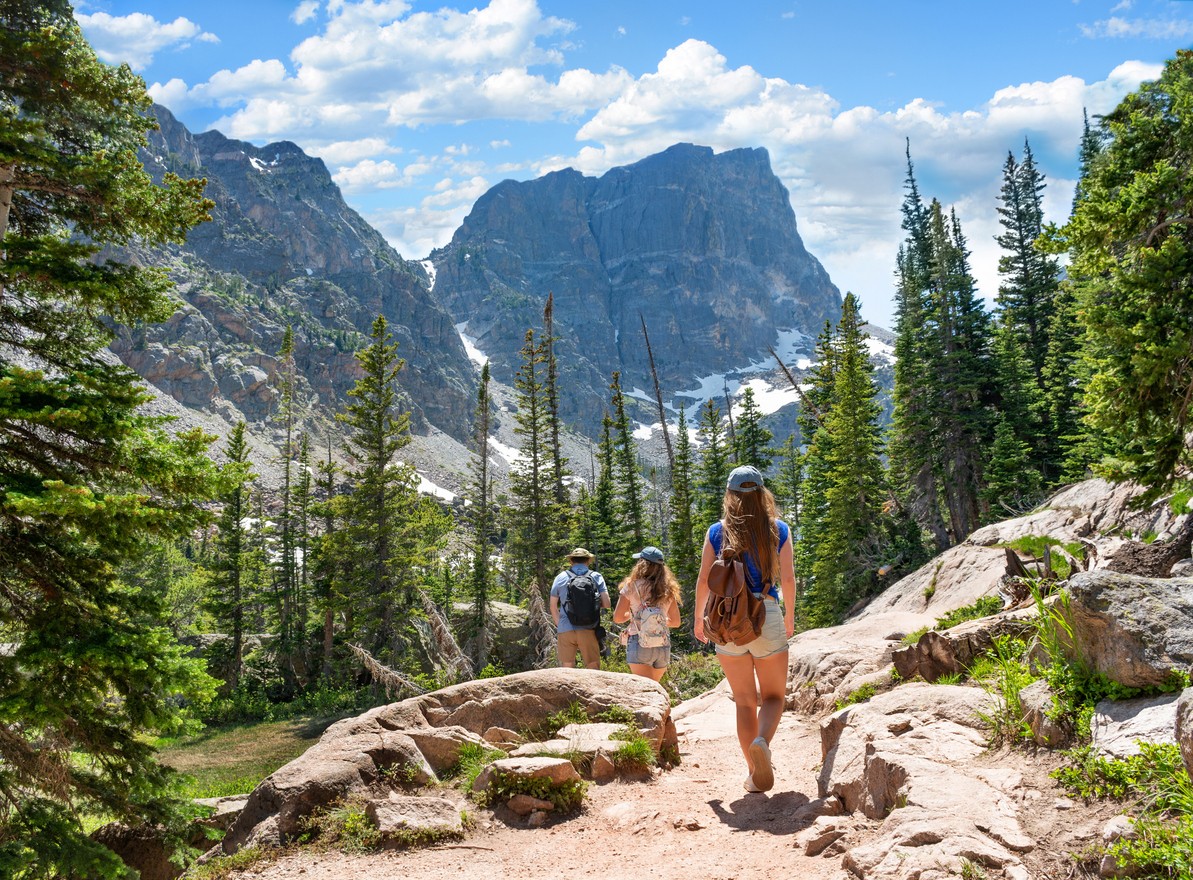
“Rocky Mountain National Park is another great park to explore by foot and has over 350 miles of hiking trails that will take you through some of the tallest peaks in the lower 48,” Todd says. “Hiking in Rocky Mountain National Park really immerses you in the Rockies where you will see alpine lakes and rivers, and [you] may even see wildlife like moose or marmots.”
Specifically, Todd recommends Alberta Falls and Bear Lake—and if you want a longer hike, he’s got suggestions for you, too.
“For a farther hiking trail I recommend actually going to the Grand Lake east side of Rocky Mountain National Park—which tends to be slightly less crowded—and doing the East Inlet Trail,” he says. “Along the way, there are many beautiful views, and be sure to find Adams Falls and the East Inlet Vista towards the end of the trail.”
RELATED: 8 National Trails You Need to Add to Your Hiking Bucket List.
8
Great Smoky Mountains National Park (North Carolina and Tennessee)
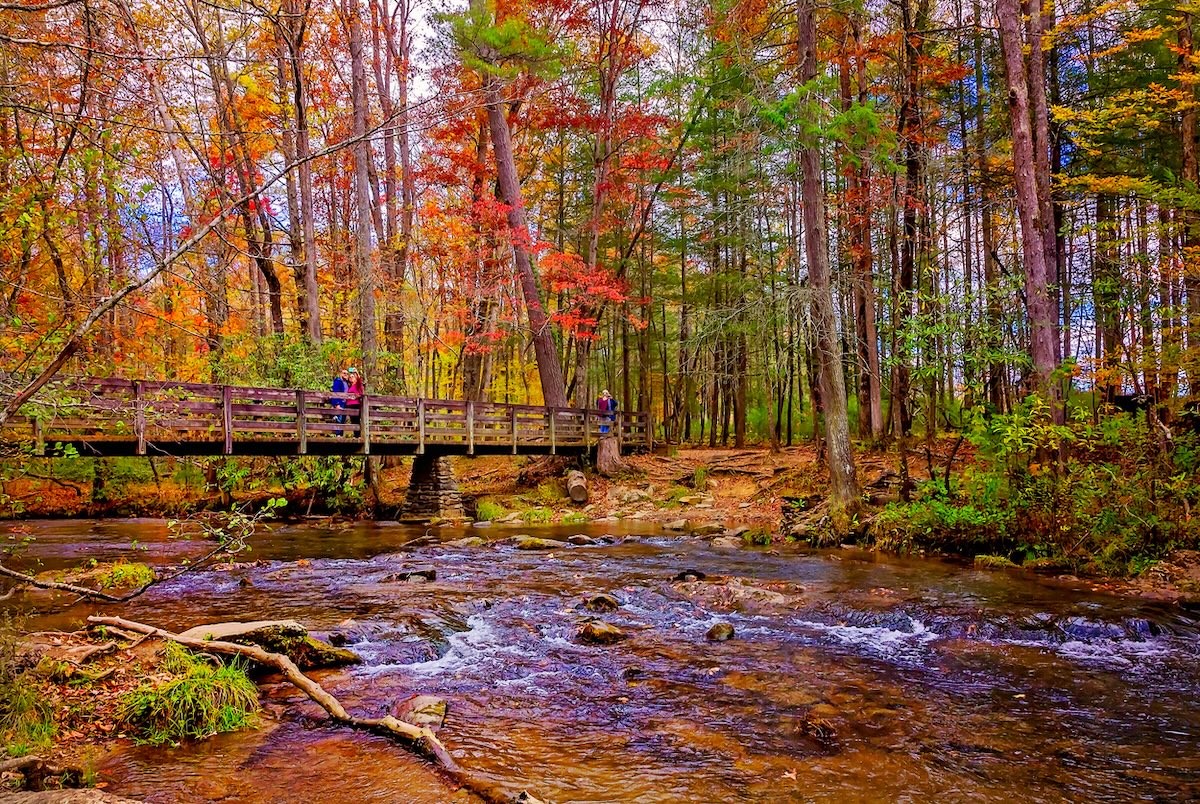
There’s a good reason why this national park is the most visited.
“The park has some of the taller mountains in the East, tons of wildflowers such as the rare flame azaleas, rivers, waterfalls, and tons of wildlife such as Elk,” Todd says. “The most popular thru-hike, the Appalachian Trail, runs through the Smoky Mountains and sees about two million people per year. If you are going to explore any park by foot, the Smoky Mountains is a good one to do so.”
He also suggests avid walkers try out Alum Cave Trail and Chimney Tops Trail—and if you want to see one of Great Smoky Mountains National Park’s many waterfalls, head to Abrams Falls (which is popular due to how close it is to the Cades Cove Loop Road), Rainbow Falls, or Laurel Falls Trails.
“If you are wanting more wildflowers, I highly recommend going in late spring,” Todd says. “For fall foliage, go a bit later, around mid-October or so, for peak foliage. And if you are up for it, tackle a section of the Appalachian Trail!”
9
Yosemite National Park (California)
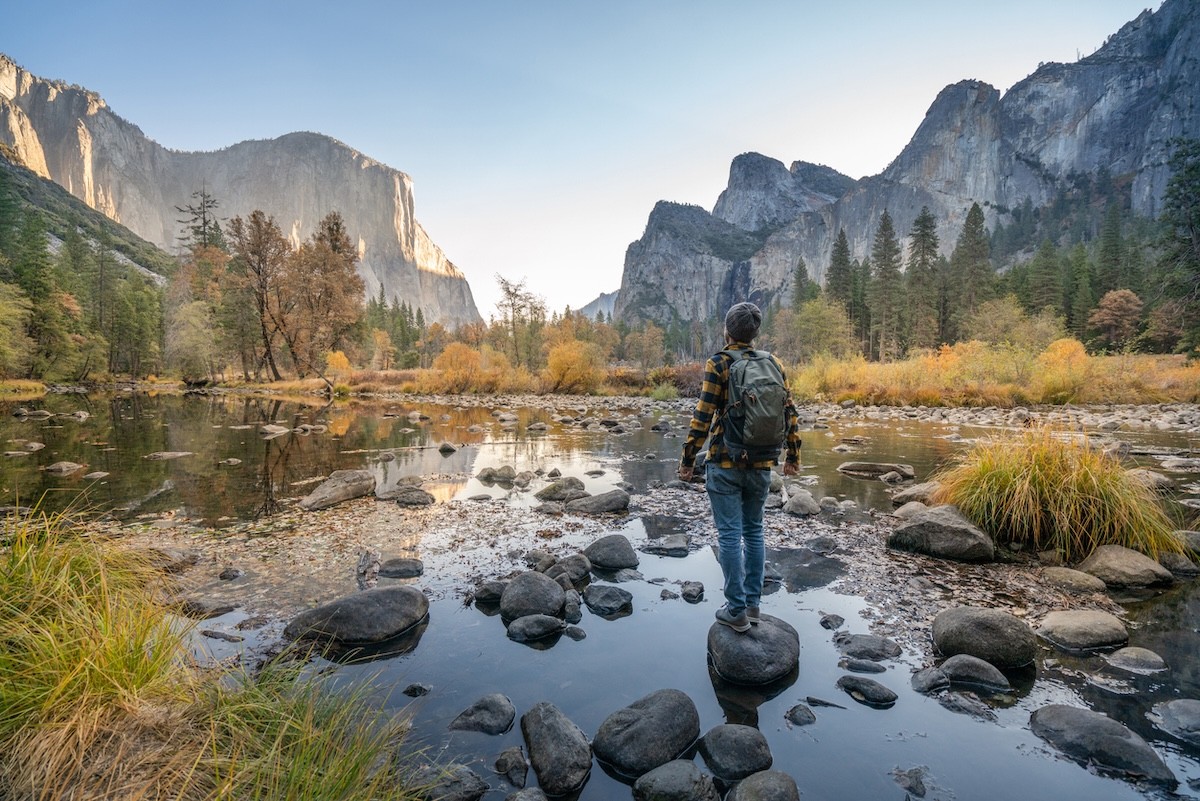
Not only is Yosemite great for walking, but it has some of the most breathtaking views. Todd says you’ll see “iconic granite cliffs, beautiful meadows, and giant Sequoia trees.”
As for where to walk, he says, “Yosemite is known for the challenging Half Dome hike and the 211-mile John Muir Trail, a popular thru-hiking trail.”
If you do end up challenging yourself with Half Dome, however, Todd says you’ll want to plan to backpack and camp overnight in Little Yosemite Valley: “This helps to break up the length and difficulty of the trail instead of trying to tackle the whole 15-mile trail all at once.”
“Other beautiful trails I highly recommend doing are Bridalveil Fall, Mirror Lake, and the Mist Trail, which takes you by Vernal and Nevada Falls,” he adds.
10
Carlsbad Caverns National Park (New Mexico)
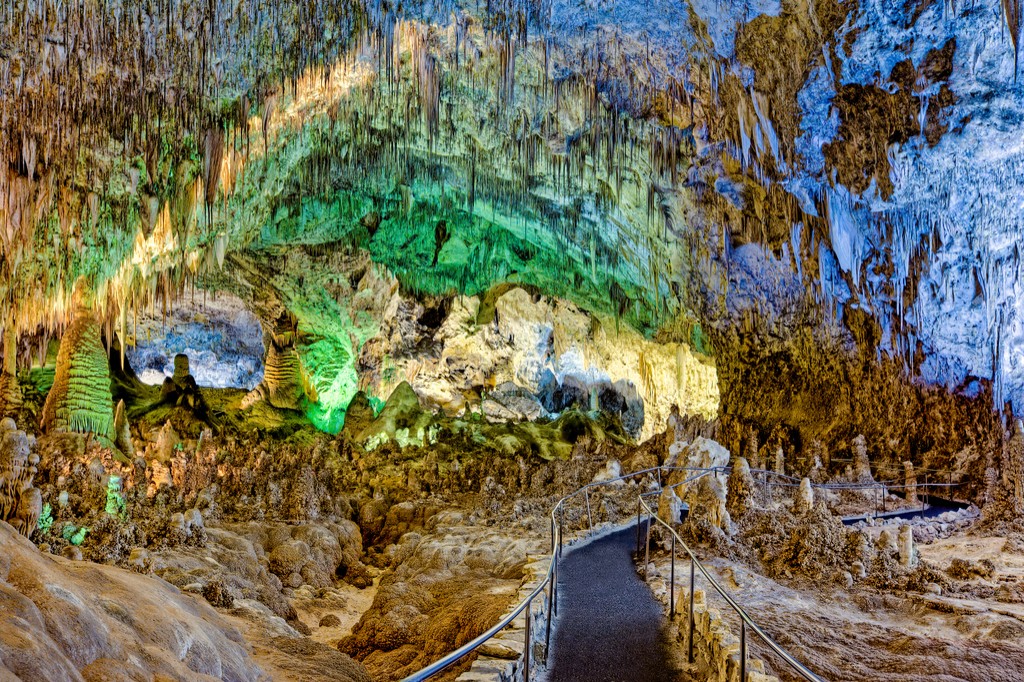
This national park in New Mexico invites you to explore ornate caves.
“Within Carlsbad Caverns National Park, you will hike deep underground as you discover a world of stalactites, stalagmites, soda straws, draperies, cave popcorn, and so much more than you ever imagined could exist in such an inhospitable place,” shares Sophie Clapton, travel blogger with We Dream of Travel.
Clapton notes that because almost all of the park exists in an “intricate cave system,” seeing it on foot is actually the only option.
“The most popular trail and one that you can do on your own is the 1.25-mile walk through ‘The Twilight Zone’ and into ‘The Big Room,'” she explains, noting that you can also book tours of several different rooms with a park ranger as your guide, including the fan-favorite: “King’s Palace Tour.”
Clapton adds, “After exploring the caverns to your heart’s content, you can walk back the way you came or take an elevator back to the surface; just be sure to stick around for sunset to witness the bats take flight in a spectacular murmuration that will take your breath away.”